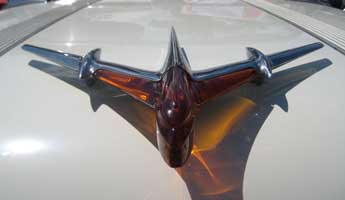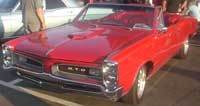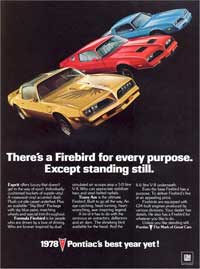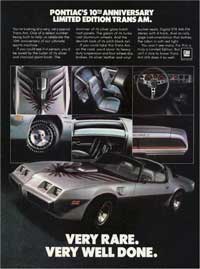
For 1967 Chevy launched the Camaro to better the Mustang. Pontiac then launched it`s Firebird to better the Camaro.
The f-bird was arguably better looking than it’s Chevy rival, and was initially offered in a wider variety of types, from the six cylinder Sprint to the fire breathing 400 and later, the Trans Am. For 1970 came a stunning new design that was so right it would remain in production for the next dozen model years. The new generation Firebird of today retains a character that’s different from the Camaro`s, once again Pontiac has taken steps to make it special and in many ways better.
It`s important to remember that successes like these were never easy for Pontiac. The reason; it usually started at a disadvantage within the GM hierarchy. Because of it`s higher sales Chevrolet always took precedence when new models were planned, and Pontiac was often forced to “borrow” from Chevrolet. Yet it always managed to make it`s versions different from Chevys. Thus the Safari differed considerably from the Nomad, the Firebird from the Camaro, the Trans Am from the Z-28.
In developing such cars Pontiac never tied itself to hidebound engineering practice nor relied on way out solutions. Though high tech ideas were tried when they seemed necessary, tried and true components were never monkeyed with. The entire line of V-8s from 1955 through the last ones in 1981 stemmed from from the same original design something that can be said of no other make`s performance power plant. But because it`s engineering was so good in the first place, there was no need to change the V-8 much.
Above all, Pontiac`s great performance record was built by people, the division was fortunate through the years in having a succession of enthusiastic leaders, Bunkie Knudsen, Pete Estes, John Delorean, Bill Collins- stylists, engineers, and managers who liked cars and, unlike so many in Detroit, they viewed cars as something more than mere people movers. Even when the GM high command frowned on performance or racing, these people defied authority to provide it, either officially or as often happened under the table. That took a lot of courage, but it resulted in some of the most impressive cars Detroit has ever produced.




